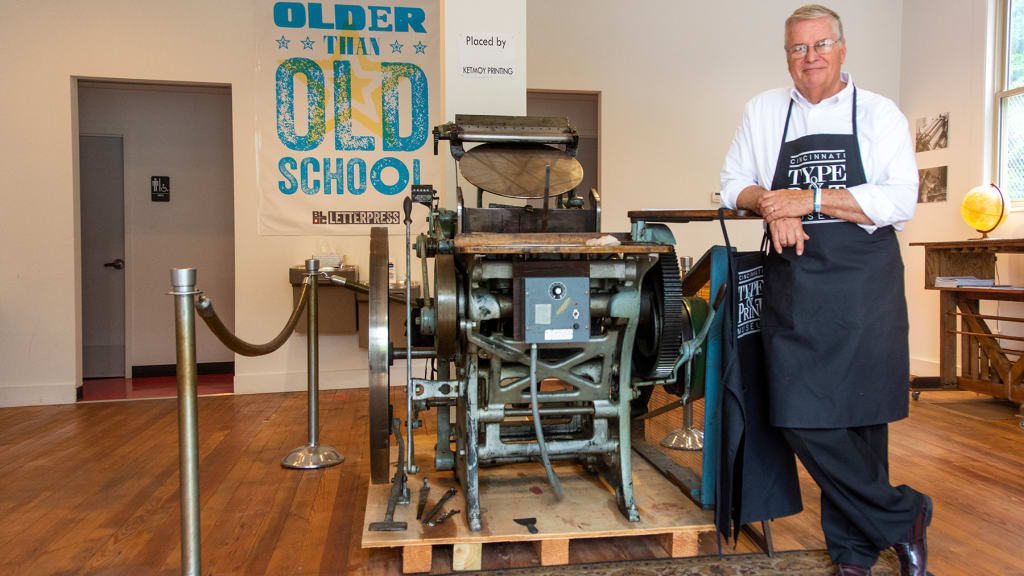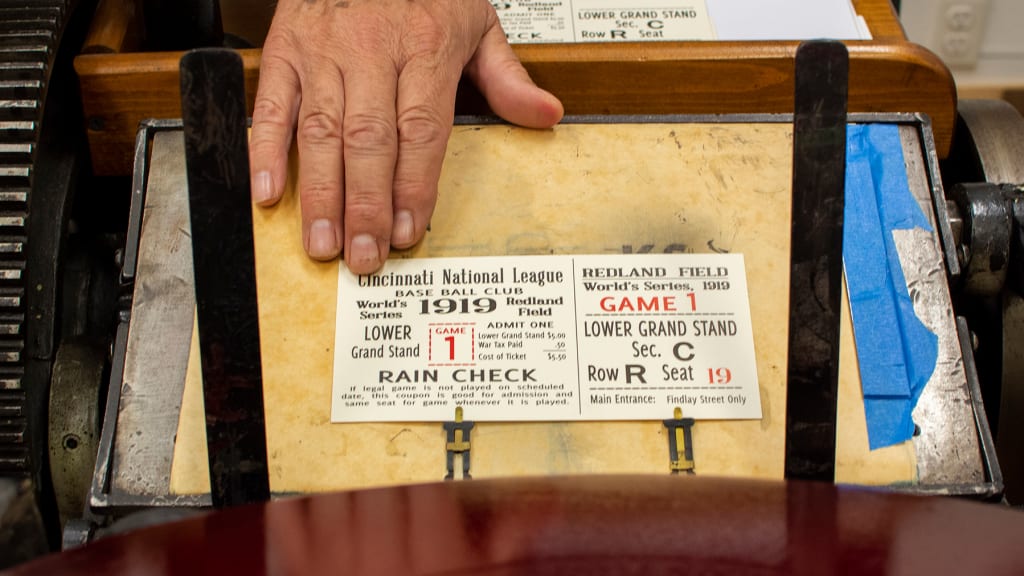
Ready to don their 1919 throwback uniforms on Sunday as part of their season-long 150th anniversary celebration, the Reds will also be distributing 20,000 replica 1919 World Series tickets to fans.
The Reds and the Cincinnati Type & Print Museum have teamed up to offer a unique collectible on a day honoring the franchise’s first World Series championship team. In addition, the museum will bring along one of its old letterpresses to set up just inside the main gates. Fans will see a demonstration of how the tickets were printed and will see the red ink added to the tickets right in front of them.
“I go to something called the Irish Table and [Reds president and chief operating officer] Phil [Castellini] gave a presentation,” said Gary Walton, head of the museum and director of print operations for BLOC Ministries. “I was just sitting there listening and thought, 'Wouldn’t it be cool if we printed the 1919 World Series tickets?' Because this is how they would have been done, on a machine like ours. So I just went up to him and said something, and next thing we know, we are emailing back and forth and now here we are.”
Walton took a liking to printing almost as early as he took a liking to the Reds. As a ninth grader in 1968, he took various shop classes. Printing was the only one of those classes in which he didn’t find himself making mistakes, so he opted to take printing for the whole year and ran a printing machine for an hour each day. Later, while studying to be a lawyer, Walton did some soul-searching and realized he was meant to be a teacher -- and almost immediately, he recalled his love for printing.

After 45 years of teaching printing at Cincinnati State, it remains Walton's passion. This passion for printing and a deeper love for helping others led him to where he is with the museum today.
Walton worked with local nonprofit BLOC Ministries to rehab the building and make it into a museum in late 2016. And it's what his business is doing for Cincinnati, and the Price Hill community in particular, that makes it so special. While the general purpose of the museum is to preserve the history of printing in Greater Cincinnati, it is so much more than that: It’s a mission-focused museum that is about providing jobs to women and giving them a safe space to learn life skills that will be useful in other jobs.
“Part of what we do is pull families, particularly women, off the street from sex trafficking and heroin addiction, and we have homes for them called 'redeem homes,' which is a full-time program of up to two years to get their life back together,” executive director of BLOC Ministries Dwight Young said. “Most of the people we have are [ages] 35-40 and never worked a day in their life. They’ve never had an opportunity to create, make, see their hands build something. It gives them a whole different emotional, mental mentality you get when you get in here and create that stuff.
“If we can give you something that will help get you back on your feet, and then long-term, you have something to lean on the rest of your life, that’s pretty good.”
While the program through the museum is only about a year and a half in, the feedback from the community has been positive, and the results speak for themselves.
“So far, we have rehabilitated eight women through our program” Walton said. “One of them recently got her GED and a job working as a dental assistant. One is working at the BLOC coffeehouse at City Hall and probably will end up running that operation down there. And another will be here with us at the museum printing.”
On the business side, Walton has big plans to pioneer what he says is the next big wave of technology in the printing industry: electronics. But what he hopes for the museum to achieve as an avenue for helping the women who come through its doors is of greater importance to him.
“My personal goal is in five years, I would love to have 80 girls that we’ve gotten off the streets,” Walton said. “You eliminate poverty by getting people off the streets. We don’t want people to move away. We want them to stay here. We want to bring wealth and knowledge to this community and make this a really good blue-collar community.”